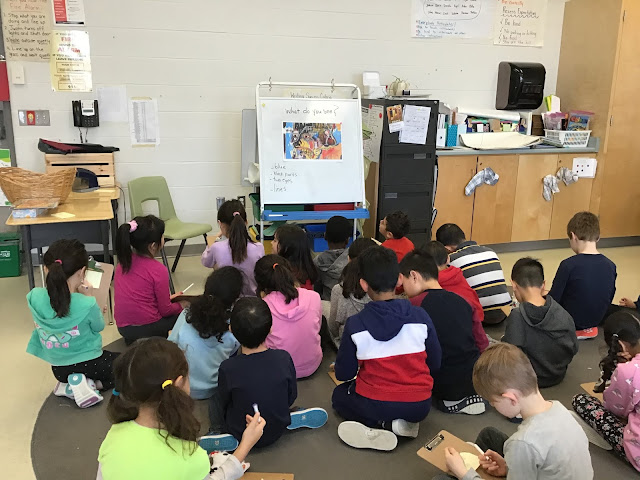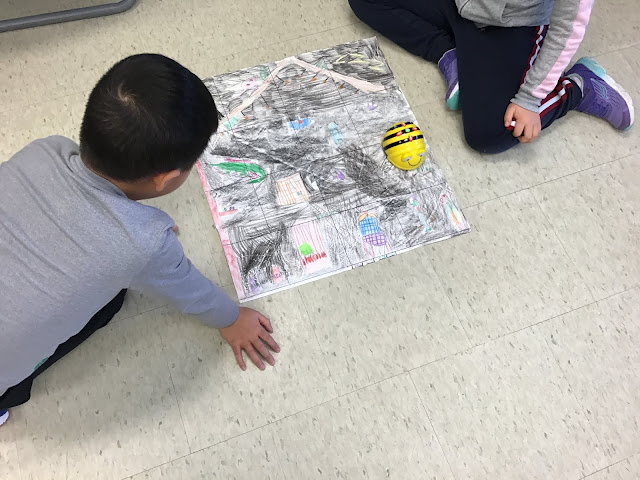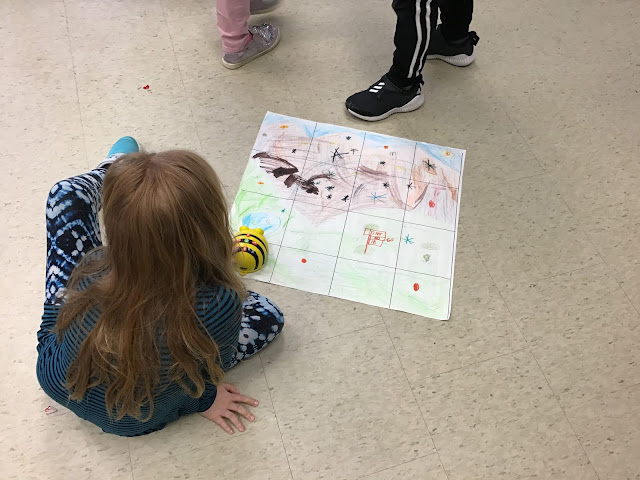Black History Month
February is Black History month. While we have been learning about the past, identity, and diversity all year through conversations about lived experiences, and picture books, this month we will have some extra conversations, stories, and activities surrounding the topic of black history.We began our discussion by visiting the display case in our school which is all about Carnival! We learned a bit about the costumes, and music, as well as some history and information about the Caribbean, and the people that trace their roots back there.
Today we read a story about Martin Luther King Jr., followed by a discussion. In art class, we read a book called Radiant Child (detailing the young life of artist Jean-Michel Basquiat). We then examined pieces of his artwork together by responding, and reflecting on it. While we engage in activities surrounding black history, students are encouraged to share what they see, feel, think, and wonder.
Black history month tends to spark student's curiosity about their own family's identity and past. I encourage students to speak to their families about their "family story" as I believe it is important for students to construct their own identity.
 |
| Students observing the Display Case all about Carnival |
 |
| This is a work in progress- it's purpose is to capture our learning, and thinking around Black History |
 |
| Some of the books that we are reading this month |
 |
| Reflecting and Responding to the artwork of Jean-Michel Basquiat |
Reading
In Reader's Workshop, we are beginning to explore non-fiction text features, and learn about how they help readers understand the text. Some of the text features we are learning about are: the table of contents, pictures with captions, headings, glossary, and index. Visiting the Aurora Public Library, and choosing a couple non-fiction books to read together at home is an excellent way to support this learning. I encourage students to choose books about topics they are interested in, and notice how the text features are helpful.If you make a trip to the library you child might also enjoy checking out a book from one of the series' we have been reading this year: Magic Tree House, Clementine, Dragon Masters.
Writing
We are starting a new writing project! Students will be working on writing their very own information books about a topic that they are an 'expert' about. We will begin by making our own lists of topics we are 'experts' about. For example, I consider myself to be an 'expert' about hiking...I do a lot of it! I also know how to make a campfire, take care of dogs, and grow a vegetable garden. I could write an information book about one of these topics. Students will have time to make their own lists, and then choose a topic that they will write about.Asking your child what they are an 'expert' about, and providing your own examples will support this learning.
Math
We are moving towards learning about adding, and later subtracting double digit numbers. We will explore a variety of different strategies for addition. To support this learning, we have been engaged in a number of activities and games about adding groups of ten. We call this taking leaps of ten. Being able to add groups of ten mentally provides a solid foundation for adding large numbers later. We have been using an open number line with snap cubes arranged in groups of 5 to help us visualize what it looks like to take leaps of ten.
You might also notice that the math homework lately has been about adding groups of ten. With our schedule being inconsistent lately I have encouraged students to bring their math homework back to school whenever it is finished. Thank you for supporting this at home.
 |
| Our math learning wall showing the open number line. Students took turns adding numbers to the tape roll at the bottom. |
Social Studies
We have been learning about mapping and movement in social studies! Students have enjoying programming the Bee Bot with commands to move around a grid. This supports the development of spatial sense. Students also described the relative location of an object on the grid using words like (forward, left, right, backwards, beside, under, above).
Next we will spend some time creating simple maps of our classroom and community, before moving onto learning about the globe including identifying and naming the continents, bodies of water, the equator, and some countries.
To support this learning at home, students will benefit from drawing simple maps of familiar places (e.g., a map of their bedroom or another room in the house, a map to the playground, school or grocery store). Students will also benefit from looking at a world map or globe and noticing the oceans, continents, and some countries. The link below connects to a website that supports this learning.
 |
| Mrs. Ford teaching the students how to use the Bee Bots |
 |
| Students programming the Bee Bot to navigate their own creative grid |
 |
| Working hard to finish their own space grid for the Bee Bot to navigate! |
 |
| Students programming the Bee Bot to navigate their own creative grid |
Health
We will spend a bit more time learning about being safe online, before moving on to learning about healthy eating. I will be using lessons from the "second grade" section in the website below to address online safety.
